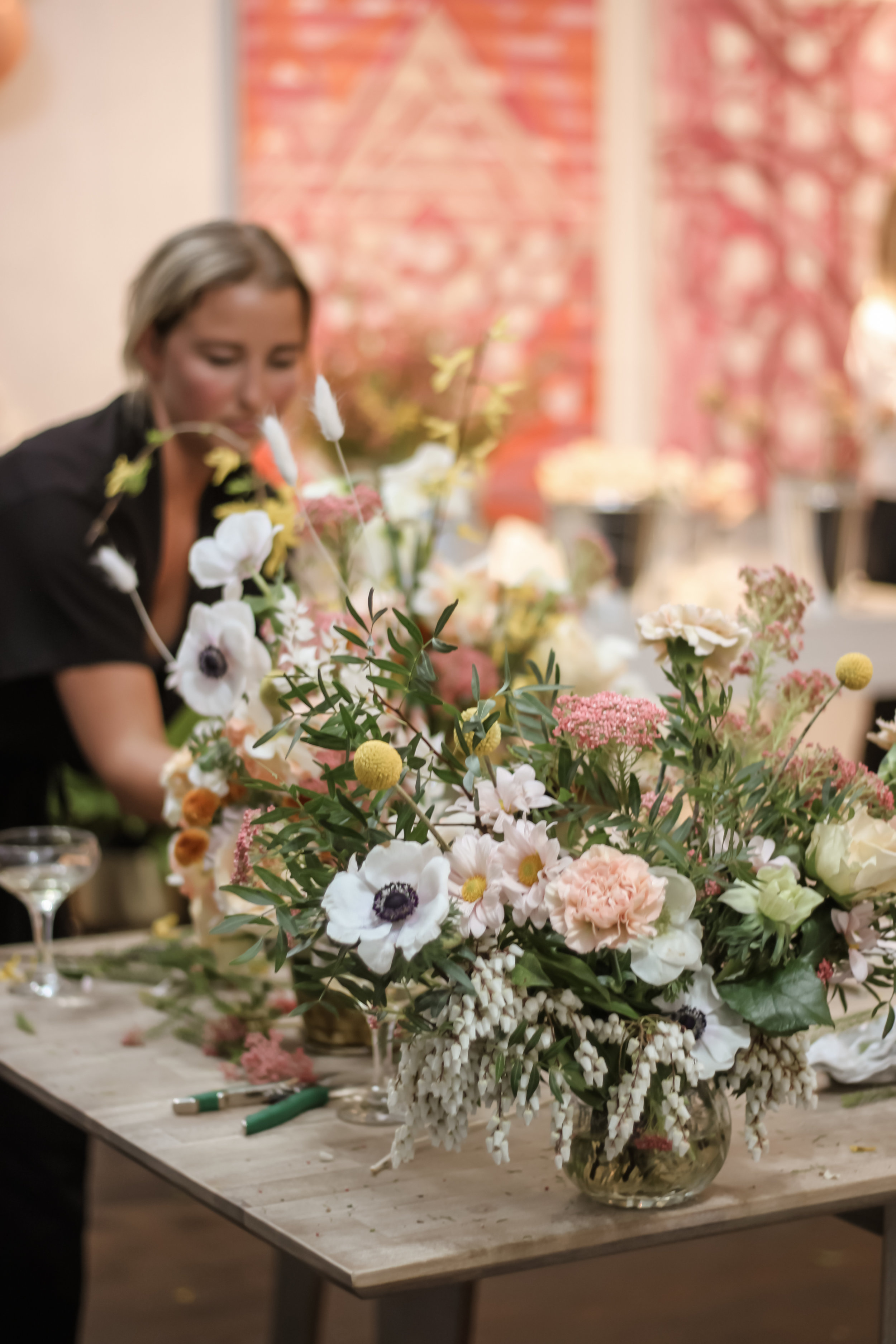Flower Arranging Workshop
When’s the last time you tried something new?
I have had my own yard for 11 years now. My first house was a tiny heritage home, I was only 19 when I bought it (and had no interest in extra responsibilities). My second house was one that I built, and I had basic landscaping put in by a professional (and the sparse shrubs were more than enough to overwhelm me). My third house was a large lot and another character home with a long established English garden (it had a colourful life of its own). My career and social life was in full swing. I enjoyed spending time in my garden at the time (mostly for parties!), but it was so established and perfectly overgrown that I just let it wildly keep it’s own personality. And I deeply loved it for that.
This time I have built a new family home sitting on 2 acres. It’s been two lovely years here come May. We’ve put in the basic landscaping, a large front and back yard of grass and a few beds. Hedges have been planted for added privacy. Fully fenced half of the backyard to keep the plentiful deer out and the plentiful children in. So now I’m throwing myself into “real” gardening. My dream cut garden. The first round of seeds grew quickly in my laundry room, and are being transplanted today . I have zinnias, cosmos, amaranth, phlox, celosia and more. Maybe one day I’ll even have a green house (if this shapes up to be something I want to commit to).
So, now I’ll have all of these flowers and no clue what to do with them! Last night I learned some new skills at a floral workshop hosted by my friend Jacklyn of Unbridled.
I’ve played around with my own arrangements at home with bunches of farm stand flowers or bouquets from the grocery store. Taking them home, taking them apart and rearranging in vases that I’ve collected from professionals over the years (often attempting to reuse their wire and tape).
Botanic Creative (Sarah) led our workshop beautifully.
She explained to us the negative environmental impact of floral foam and that it is worth taking the road-of-most-resistance by using cut chicken wire. Once you have bent the wire into a workable shape, you simply put it in the centre of your vase. We worked with a range of short vases - making for a low centre of gravity. She talked about the varying ways that florists start an arrangement. The old school way is starting with your greenery/filler. My take was that Sarah likes to go with the flow and blend the more traditional techniques with a modern flair. Her mother owned a floral shop so she was exposed to this industry from a very young age and throughout her life. I can appreciate how that influences your path, as I also followed the family foot steps and have been in Real Estate since I was 16 (this is the year I’ve officially spent half of my life in this career!).
I preferred her suggestion of starting with the florals. It made sense to me to start with my favourite/main flowers that I wanted to feature, and then start filling as I went (which worked well as I essentially had no vision or idea of how to move forward!). In this case, I started with 2 anemone.
I can’t even remember the last time I tried something new, the last time I sat engrossed in a task for an hour uninterrupted. I can’t even get the dishes washed with my full attention. It was such a good feeling. Especially the opportunity to be creative. I don’t have many outlets that way. I think that’s probably why I plan so many parties! It felt very grounding.
But, it seems to be one of those things (for me at least) that it just never felt “done”. I can see this being a hobby that I enjoy growing with. I have been Pinning floral arrangements since the dawn of Pinterest, so my head is swimming with styles that I’ve loved that I just don’t know how to emulate. I’m sure that will come with time and practice.
Sarah set up a gorgeous vignette for us so that our creations could get the star treatment that they deserved! It was cool to walk around the rooms afterward and see what different directions each person took, even though we all started with the exact same materials and instructions.
My final arrangement!
Sarah was kind enough to outline what she believes to be the 3 most important
1. Explore your local surroundings.
I guarantee that you have someone who grows flowers nearby, either for a living or for simple joy. Buy local when possible and forage responsibly. Some flowers and natural elements you may find grown on Vancouver Island, by season are:
Spring
Anemone, ranunculus, daffodils, tulips, forsythia, sweet peas, ocean spray
Summer
Dahlias, zinnias, amaranth, nigella, feverfew, Queen Anne’s Lace, roses, scabiosa, foxglove, snap dragon
Autumn
Sunflowers, rudbeckia, scabiosa, amaranth, mums, grasses, seed pods, dried stems
Winter
Pine, cedar, fir, hemlock, magnolia, boxwood, holly, hawthorne, huckleberry, cones, snowberry
2. Honour colour.
Not every arrangement needs greenery, in the traditional sense of the term. For me, 'greenery' (elements that are green) are fabulous when green is what is needed, but try this: explore using ‘filler’, in which compliment and enhance the palate. Perhaps this means a branch of autumn leaves or a handful of dried summer grasses. The leaves act as ‘greenery’, yet may compliment the palate of autumn nicer than green; the naturalness of the grasses may enhance the muted tones of summer.
3. Turn off and tune in.
Really delve into your experience and minimize external distractions. Allow yourself some quiet moments to plan but then simply begin by letting yourself go, free of self-doubt and Pinterest anxiety. Show some self-compassion by giving yourself some unadulterated, judgement-free moments of play. If you become stuck or feel frustrated, walk away and return with fresh eyes.
I think it’s fair to say the only negative consequence for me taking this workshop… is that now I want to plant more flowers and take more classes!
Sarah & Jacklyn












